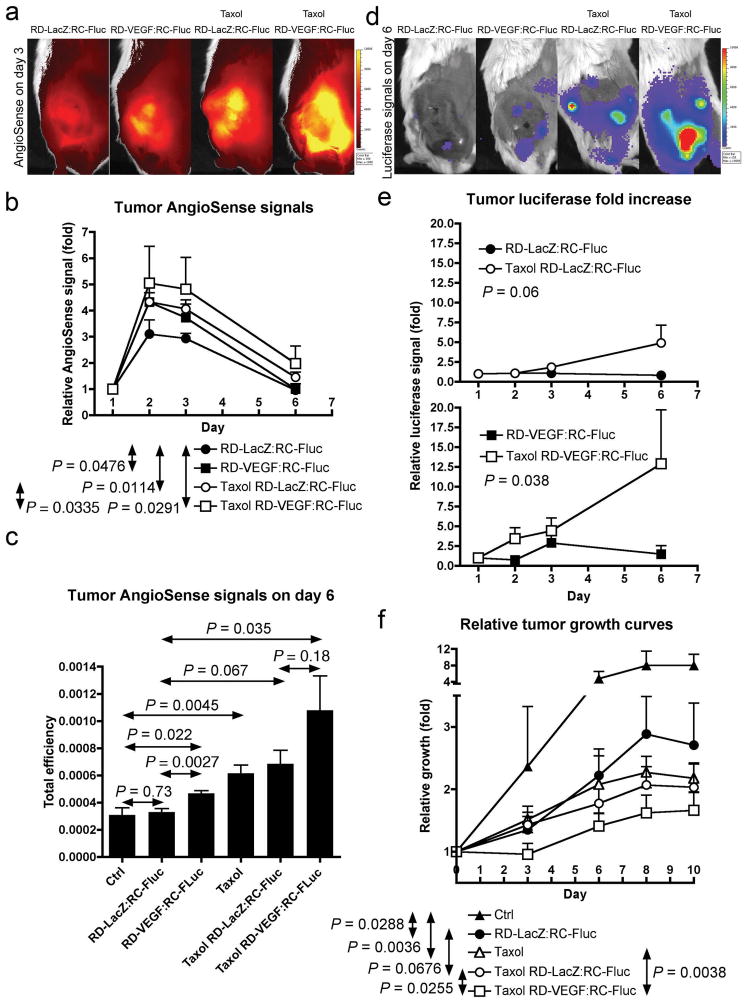Figure 5.
Paclitaxel enhances N2a tumor vascular leakiness and promotes propagation of oncolytic Sindbis vector after initial infection. On day 0, treatments of 1:1 mixture of RD-Sindbis/VEGF:RC-Sindbis/Fluc (0.5 mL, each has ~107 particle/mL) were injected into tumor-bearing mice via the tail veins. We used 1:1 RD-Sindbis/LacZ:RC-Sindbis/Fluc mixture as a control. Persistent tumor luciferase activities indicate successful delivery, infection, and propagation within tumors. I.p. paclitaxel treatments (Taxol®, 16 mg/Kg or 48 mg/m2 on day 1, 3 and 6, compared with maximum tolerated dose of 175 mg/m2 in human) cause vascular insults and enhance tumor vascular leakiness. AngioSense 750 (0.66 nmol) was i.v. injected on day 1 and its retention kinetics was monitored on day 1, 2, 3 and 6. (a) AngioSense imaging on day 3. (b) AngioSense retention kinetics and two-way ANOVA analysis of indicated treatment pairs. (c) AngioSense retention signals in tumors on day 6 and t-test analysis. (d) The enhanced vascular leakiness further synergizes with RD-Sindbis/VEGF and promotes oncolytic replication of RC-Sindbis/Fluc vector in tumors. (e) Quantitative presentation of luciferase signals in tumors. (f) Relative growth curves and two-way ANOVA analysis.

